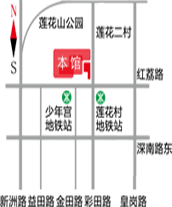
- Shenzhen has made great contributions to the development of modern design in China - Interview with Ms. Zhang Qiman from the School of Design at the Central Academy of Fine Arts
-
Guan Shanyue
Q: Teacher Zhang is a senior judge at an art and design exhibition, and has experienced three design exhibitions in China. Could you please talk about the changes during this period.
Answer: The development in the past decade has been too fast. The various design categories have developed from small majors to large majors, and the number of practitioners has increased rapidly. From the collection of the 11th Art Exhibition, it has greatly exceeded the 9th and 10th editions. Although some designers in society may not have been able to submit their works due to various reasons, based on our understanding of the industry situation, this exhibition can basically reflect the face and level of contemporary design development in China. I specialize in environmental art, so I can only look at it from the perspective of my major. In the past nine art exhibitions, our profession was called interior decoration, now it is called environmental art design. Not only has the name changed, but the concept has also changed, including multiple designs such as planning, architecture, landscape, interior, furniture, etc. It can also be further divided, such as exhibition design in interior design, etc; The professional requirements are also increasing. We not only require a design plan for the exhibited works, but also need to implement it specifically. We also need to see the effect after completion, which reflects the progress in our profession. In the past, the Central Academy of Arts and Crafts was the only major in environmental design. Now, according to the statistics of professional enrollment information released by the Ministry of Education, there are 1377 universities offering environmental design majors. This is a huge system, not only public buildings, commercial buildings, but also people's home decoration all require environmental design. All cities require it. As we have a large population and many families, their living conditions will have higher requirements. Therefore, the investment of families in the environment and public commercial spaces is increasing rapidly year by year, which may be the largest industry and market in the world. So our industry is developing rapidly and making progress, which has put a lot of pressure on us because our major started late and there is still a considerable gap compared to the advanced design level abroad. Professional design schools need to improve their own level as soon as possible to meet the needs of industry development, including our professional design level, teaching level, and basic theoretical research level. The construction and interior decoration industry in Shenzhen started very early. In the 1980s, interior decoration became a pillar industry in Shenzhen, with a large number of employees, rich accumulation, and a development level at the forefront of the country. Many major project design projects in the country were awarded by design companies in Shenzhen, which itself indicates the problem. Therefore, Shenzhen has made great contributions to the development of our profession.
This design art exhibition is being held in Shenzhen again, and I am very happy. After coming to Shenzhen, there are also many things to see. Last year, Shenzhen was named the "City of Design" by UNESCO. We are deeply touched by the fact that there is at least one city in China that elevates design to the level of urban development strategy. Nowadays, many cities, including many leaders, do not even recognize the importance of design. Some public buildings are simply retro and antique, with a dragon shaped here and a phoenix painted there, and traditional symbols being rigidly labeled without considering modern spatial characteristics and functions. Such antique style is not promising, but Shenzhen has done a good job with a modern design concept.
In recent years, the Environmental Art Professional Art Committee of the China Artists Association has carried out many activities. Professor Cai Qiang from Shenzhen University is the deputy director of our art committee. We have proposed an idea to the Shenzhen Municipal Bureau of Culture, hoping to establish a permanent forum in Shenzhen - the China Furniture Design Forum. Although furniture design is not large in size, it has a high level of design content and is an important landscape in interior design. This industry is also very large, and people's housing conditions have improved. They also hope that the design and manufacturing level of furniture can be greatly improved. They not only meet the functional needs, but also need to have a significant improvement in aesthetic taste. Therefore, many masters in the world have engaged in furniture design. We want to create a forum where we can publish the latest high-end research results and also showcase related design products. Our art committee currently holds a grand exhibition every two years. Last year, we were in Shenzhen, and next year we will be in Xi'an. Next year's project is to renovate and design raw earth residential buildings. We have mobilized four universities to work together. For example, there is a Mazha village in Xinjiang, which is a pilgrimage site. It is a type of raw earth building, half of which is buried underground. Recently, UNESCO conducted an investigation and plans to include it in the world's intangible cultural project. At present, the Art and Design Department of Xinjiang Normal University is working on the renovation design of this village. The theme of all our projects is "Design for China", and the reason why this project is scheduled for development in the western region is mainly to design home architecture for rural areas and farmers, including pipeline design for water supply and drainage. In the past, there was no pipeline design for soil construction projects. We had to design residential and planning plans that met modern living standards for rural areas.
Q: Nowadays, many designers design for exhibitions, for competitions and awards, and for business. Your design project is to propose a solution to social problems and a housing solution for vulnerable groups, which truly reflects her social value.
Answer: So our theme is "Design for China", and our brand has already been established. From 2004 to next year, it will be the fourth edition. We hope that our cooperation with Shenzhen can also be realized as soon as possible. Shenzhen is a great platform.



